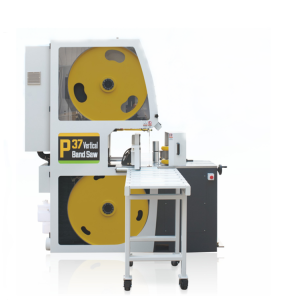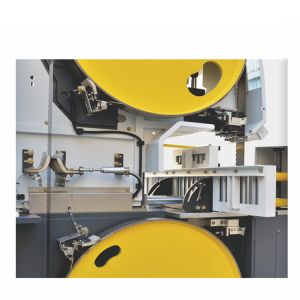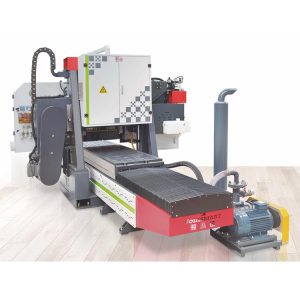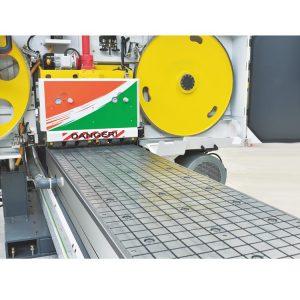When we use a sawmill to cut different materials, various problems will inevitably occur. Sometimes it may be a problem with the band saw blade, and sometimes it may be a problem with the sawmill.
Proper use of both the sawmill and the saw blade is necessary to ensure a smooth job. Today we mainly discuss four problems that may occur with a sawmill. Now let’s look at some details and ensure that the machine can make reliable precision cuts.
1. Wire wheel wear
Most sawmills come equipped with a wire wheel (or wire chip brush). Wire wheels serve a vital function in removing chips (the bits of material removed during cutting).
Any debris accumulated in the esophagus must be removed. If this material is not removed as the tooth reenters the incision, the risk of tooth fracture is high and the blade may be destroyed immediately.
This becomes even more important in harsh cutting applications where heat can build up quickly. Sometimes this results in hot metal shavings welding themselves to the tooth.
Solution: Check and adjust the wire wheel regularly. A properly installed wire wheel needs to be at a slight angle to the direction of travel of the blade to effectively bounce away chips. Ideally, the chip brush needs to be spring-loaded to ensure that it remains in contact with the teeth.
2. Drive wheel misalignment
It is critical for true wheel alignment that the clearance between the trailing edge of the blade and the lips of the drive and idler wheels is within certain specified limits.
If the trailing edge of the blade comes into contact with the wheel, burrs and microcracks will form under pressure, causing premature fatigue of the blade. This friction can cause the trailing edge of the blade to work harden, become brittle, and crack. Wheel alignment is not easy to check, which is a fundamental flaw in many sawmills on the market today.
Solution: For proper operation of a cutout band saw blade, the wheels may need to be adjusted to maintain clearance between the rear edge of the band and the wheel flange. The ideal clearance needs to be confirmed with your machine supplier and must be checked while the blade is under tension.
The drive wheel and idler wheel are mounted on the shaft through bearings. It may be necessary to remove the wheels and install spacers or similar devices to bring the wheels into alignment.
3. Worn rails (sides and top)
All sawmills have a guide system that helps the blade run accurately and straight during cuts. However, over time, the rails will wear and accumulate fine chips and residue.
This causes increased friction that affects the sides of the band saw blade, causing micro-cracks and blade breakage. There are two main types of guides – carbide guides and ball bearing guides
Solution: Rails need to be inspected, cleaned and adjusted regularly to ensure there is no build-up on the rail surface. This can be done after removing the bandsaw blade, disassembling the blade guide assembly, and cleaning out chip buildup and filing.
The roller bearings can be replaced and the surface of the carbide rails polished to restore a flat surface. We recommend band saws equipped with carbide guides, which guarantee optimal blade life and accurate cuts for the life of the blade.
4.Tooth pitch is incorrect
Correct tooth spacing is extremely important to ensure maximum blade life and clean cuts.
If there are too many teeth in the cut (the teeth are too small), this can cause the tooth esophagus to become full, leading to tooth loss and esophageal rupture. This can also lead to misalignment and inaccurate cutting.
If there are too few teeth in the incision (the teeth are too large), this can also lead to tooth loss and esophageal rupture. Insufficient teeth can also cause the product being cut to get stuck and sometimes even deform.
Solution: Choosing the right TPI depends on a number of key factors such as the material being cut, the length of cut and the thickness of the product being cut. If you are out of ideas, please contact us for advice suitable for your application.



